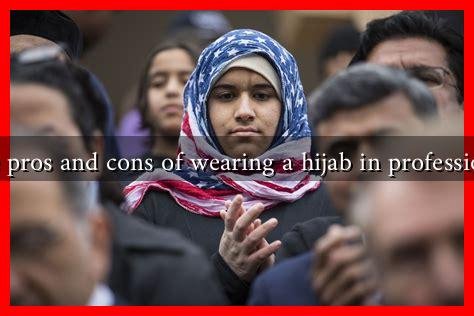-
Table of Contents
What are the Pros and Cons of Wearing a Hijab in Professional Settings?
The hijab, a traditional headscarf worn by many Muslim women, has become a topic of discussion in various professional environments. As workplaces become increasingly diverse, understanding the implications of wearing a hijab in professional settings is essential. This article explores the pros and cons of wearing a hijab at work, providing insights into the experiences of women who choose to wear it.
The Pros of Wearing a Hijab in Professional Settings
Wearing a hijab can have several advantages in professional environments, both for the individual and the workplace as a whole. Here are some key benefits:
- Expression of Identity: For many Muslim women, wearing a hijab is a significant expression of their faith and cultural identity. It allows them to embrace their heritage and maintain their religious practices while engaging in professional life.
- Promotes Diversity: The presence of hijab-wearing women in the workplace can enhance diversity. A diverse workforce can lead to increased creativity, innovation, and problem-solving capabilities, as different perspectives are brought to the table.
- Encourages Inclusivity: Organizations that support employees’ choices regarding religious attire often foster a more inclusive environment. This can lead to higher employee satisfaction and retention rates.
- Professionalism: Many women feel that wearing a hijab adds to their professionalism. It can create a sense of formality and seriousness, which may be beneficial in certain professional contexts.
Case Studies: Positive Experiences
Several companies have embraced diversity and inclusivity, leading to positive experiences for hijab-wearing employees. For instance, companies like Microsoft and Google have implemented policies that support religious attire, allowing employees to express their identities freely. These companies have reported higher employee morale and productivity as a result.
The Cons of Wearing a Hijab in Professional Settings
While there are many benefits to wearing a hijab, there are also challenges that hijab-wearing women may face in professional settings. Here are some of the drawbacks:
- Discrimination and Bias: Unfortunately, hijab-wearing women may encounter discrimination or bias from colleagues or clients. This can manifest in subtle ways, such as being overlooked for promotions or facing microaggressions.
- Limited Job Opportunities: Some women report difficulty finding employment in certain industries or companies that may have an implicit bias against visible religious symbols.
- Workplace Culture: In some professional environments, wearing a hijab may be viewed as unconventional, leading to feelings of isolation or exclusion from workplace culture.
- Increased Scrutiny: Hijab-wearing women may feel that they are under more scrutiny than their non-hijab-wearing counterparts, leading to added pressure to perform and conform to workplace norms.
Statistics on Hijab in the Workplace
According to a study conducted by the Pew Research Center, approximately 60% of Muslim women in the U.S. reported experiencing some form of discrimination due to their religious attire. This statistic highlights the challenges that hijab-wearing women may face in professional settings.
Conclusion: Navigating the Professional Landscape
Wearing a hijab in professional settings presents both opportunities and challenges. While it allows for personal expression and promotes diversity, it can also lead to discrimination and bias. Organizations that prioritize inclusivity and support for diverse identities can create a more welcoming environment for hijab-wearing women. Ultimately, the decision to wear a hijab in the workplace is deeply personal and should be respected, as it reflects an individual’s beliefs and values.
As workplaces continue to evolve, fostering an environment of understanding and acceptance will be crucial in ensuring that all employees, regardless of their attire, can thrive professionally.

